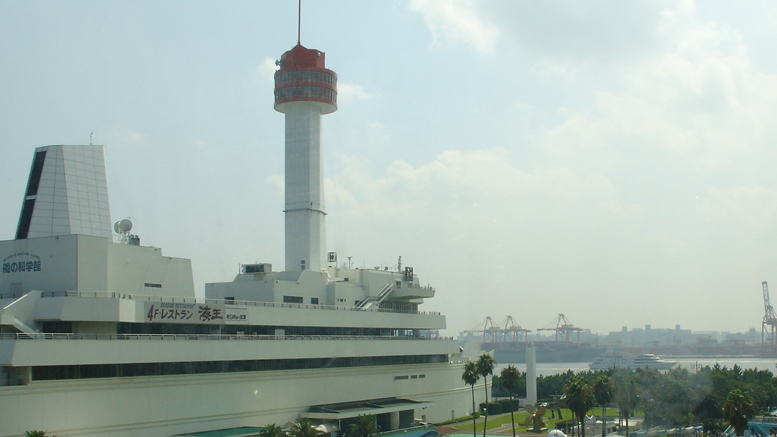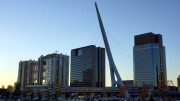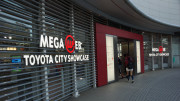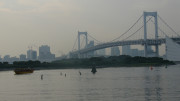The Museum of Maritime Science or Fune-no-Kagakukan as it is known, is everything nautical, the building is even shaped like a giant ship. There are several levels of interactive displays, a large outdoor area, an observatory and even a seaside pool that is open during the summer, making the centre hugely popular during the warmer months.

The Museum of Maritime Science or Fune-no-Kagakukan as it is known, is everything nautical, the building is even shaped like a giant ship. There are several levels of interactive displays, a large outdoor area, an observatory and even a seaside pool that is open during the summer, making the centre hugely popular during the warmer months.
The museum has a wealth of fascinating items and is a comprehensive display of man’s quest with the mighty oceans. The lower levels are dedicated to engineering and the design of ships, with displays on ship building, propulsion and ship design. There is also a hall dedicated to marine symbols as well as meeting and conference facilities.
The upper decks have displays on sailing and feature many models of Japanese sea craft, including submarines, ferries, super-tankers, container ships, and wooden ships. A highlight for many is the extremely cool radio controlled boat corner where children can play and control a range of small watercraft on a large pond.
The grounds of the museum are home to larger historical artefacts portraying many of the important milestones of Japanese maritime heritage. You will find most of the information is in Japanese, but it is fairly easy to understand what is going on most of the exhibits. One exhibition not to miss is a ship moored off the grounds, the Soya, constructed in 1938 this vessel is a cargo icebreaker and served as Japan’s first Antarctic observation ship. There is a submarine, the main battery of the battleship Mutsu and a very interesting superconducting electromagnetic propulsion system that was built as a world first for the Yamato 1, an experimental craft from the early 1990’s.
The centre also features a good gift-shop, cafe and restaurant making for an excellent place to end the museum tour which takes about an hour.
The Museum of Maritime Science has its own station on the Yurikamome Line called Fune-no-kagakukan (station U-08). Another novel way of reaching the building is by using the Water-Bus which departs from Hinode pier which is also a Yurikamome Line Stop (station U-04). While on Odaiba look out for the free shuttle buses which loops the Odaiba waterfront precincts attractions, get off at the huge cruise liner shaped building.
Official Website:
http://www.funenokagakukan.or.jp/




